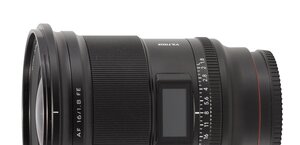Sony Carl Zeiss Vario-Sonnar T* DT 16-80 mm f/3.5-4.5
8. Vignetting

In a nut shell it didn’t manage at all, having here the biggest slip-up during the whole test. At 16 mm and the maximum relative aperture the corner illumination loss was as much as 42% (-1.6 EV). On stopping down it decreases but not very efficiently because by f/4.0 it’s still 34% and by f/5.6 as much as 21%, Even by f/8.0 the vignetting is still quite perceptible – 18%.
Please Support UsIf you enjoy our reviews and articles, and you want us to continue our work please, support our website by donating through PayPal. The funds are going to be used for paying our editorial team, renting servers, and equipping our testing studio; only that way we will be able to continue providing you interesting content for free. |
- - - - - - - - - - - - - - - - - - - - - - - - - - - - - - - - - - - - - - - - - - - - - - - -
Sigma 17-70 mm and Nikkor 18-70 mm at least improved at the middle focal length range. With Zeiss it’s a different story – its dimensions backfire here and there is only slight improvement. The best result we get at 30 mm where, wide open, the corner illumination loss is just 24% (-0.79 EV). On stopping down to f/5.6 the vignetting decreases to 16% and only by f/8.0 it reaches an imperceptible level of 10%.
With the increase of the focal length the situation is getting worse again. At 50 mm and by f/4.5 the illumination loss is as much as 30% (-1.04 EV). By f/5.6 the vignetting is 24% and by f/8.0 – 16%. Only by f/11 the vignetting stops being a problem.
The situation is very similar at 80 mm – there, vignetting increases to 30% again . By f/5.6 it decreases to 21%. By f/8.0 it reaches 12%, by f/11 it falls to an imperceptible level of 7%.
 |
 |
 |






